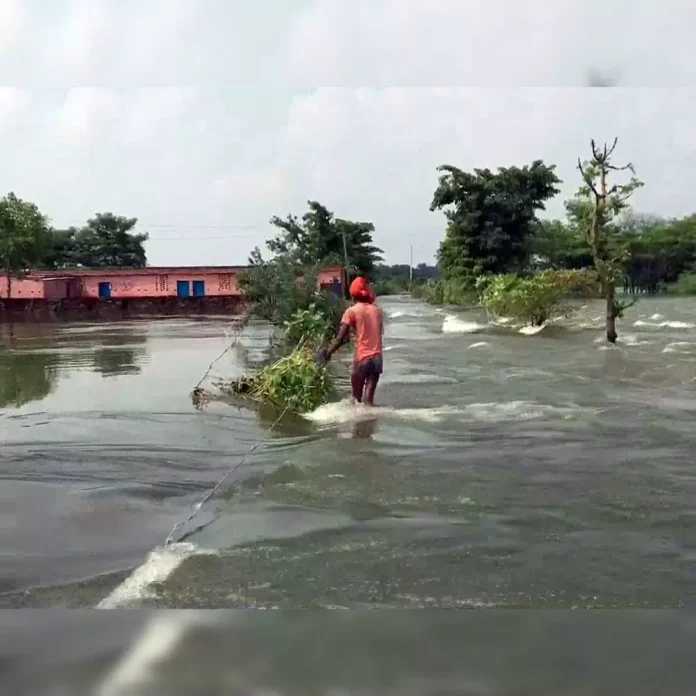In Tripura, severe flooding has led to a crisis with ten confirmed deaths and over 34,000 people displaced. The floods, triggered by relentless rains, have devastated large areas, including several villages and towns. The National Disaster Response Force (NDRF) has deployed multiple teams and boats to the worst-affected regions to assist with rescue and relief operations.
The heavy rains that began earlier this week have overwhelmed the state’s drainage systems and rivers, causing them to overflow. In response to the escalating situation, the NDRF has intensified its efforts. Teams have been working around the clock to evacuate stranded residents and provide essential aid. The deployment includes boats to navigate the floodwaters and reach those trapped in their homes.
Authorities have also set up temporary shelters for the displaced individuals. These shelters offer basic necessities such as food, clean water, and medical supplies. Local officials and volunteers are coordinating with the NDRF to ensure that relief reaches those in need as quickly as possible. Despite these efforts, the scale of the disaster has created significant challenges for the relief teams.
In addition to the immediate human cost, the floods have caused extensive damage to infrastructure. Roads, bridges, and communication lines have been severely affected, complicating the rescue operations. Power outages and water supply disruptions have further exacerbated the difficulties faced by residents and relief workers.
The state government has declared an emergency and is working with central authorities to manage the situation. Emergency funds have been allocated to support relief efforts, and additional resources are being mobilized to address the growing needs of the affected population. Officials are also urging residents to stay in safe areas and follow instructions from the authorities.
The impact on agriculture and local businesses is expected to be significant. Many fields have been inundated, and crops are at risk of being lost. The economic repercussions of the floods will likely be felt for months to come. Local leaders are calling for support from both state and national governments to address the long-term recovery needs.
As the situation unfolds, the NDRF continues its critical work, and efforts are underway to assess the full extent of the damage. The immediate focus remains on rescuing individuals, providing relief, and restoring normalcy. The government and relief agencies are working tirelessly to mitigate the effects of the floods and assist those affected.
The situation remains fluid, and updates are being provided regularly as new information becomes available. The response to this disaster highlights the importance of preparedness and quick action in the face of natural calamities. As Tripura faces these challenges, the combined efforts of various agencies and the community will be crucial in navigating this crisis and supporting those in need.




